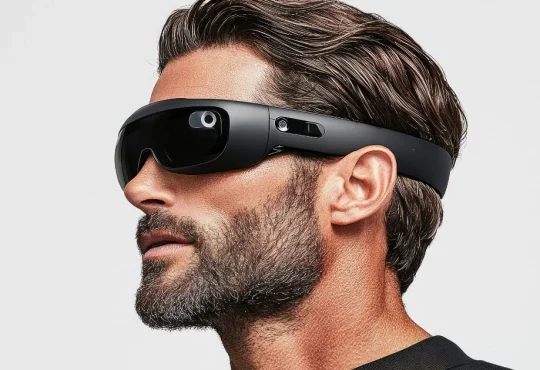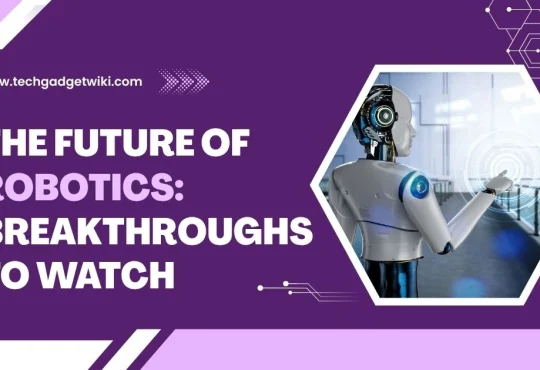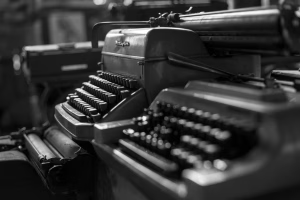
From Benjamin Franklin’s exploration of electricity in 1752 to the launch of the Hubble Telescope in 1990, this era saw transformative technological advancements, revolutionizing communication, transportation, and medicine. Through relentless innovation, this timeline showcases the remarkable evolution of technology and its enduring impact on the world.
Technologies’ Evolution Guide: 1752-1990s Amazing Innovations!
1752 Lightning Rod: Benjamin Franklin invents the lightning rod, safely conducting lightning strikes into the ground.
1776 Submarine: David Bushnell’s “Turtle” submersible attempts an unsuccessful attack during the American Revolution.
1790 First U.S. Patent: William Pollard received The inaugural U.S. patent issued for a machine capable of roving and spinning cotton fibers.
1794 Cotton Gin: Eli Whitney patents the cotton gin, revolutionizing cotton processing.
1797 Interchangeable Parts: Eli Whitney pioneers interchangeable parts for musket manufacturing.
1801 Steam-Powered Pumping Station: Fairmount Water Works in Philadelphia implements steam power for water supply.
1803 Spray Gun: Dr. Alan de Vilbiss invents the spray gun for medication application.
1805 Amphibious Vehicle: Oliver Evans’s “Orukter Amphibolos” steam-powered dredging machine.
1806 Coffee Pot: Count Rumford invents a coffee pot with a metal sieve.
1807 Steamboat: Robert Fulton’s “Clermont” demonstrates steam power for river travel.
1813 Armored Warship: Robert Fulton’s “Demolos” is a steam-powered warship carrying thirty 32-pound cannons.
1814 Plough: John Jethro Woods invents a plow with a replaceable cast-iron tip, improving farming efficiency.
1817 Erie Canal: Engineers proposed a 363-mile canal connecting the Hudson River with Lake Erie, with the “Seneca Chief” making its inaugural run in 1825.
1818 Profile Lathe: Thomas Blanchard’s woodworking lathe standardizes parts, reducing wood prices.
1830 Electro-magnetic Motor: Joseph Henry builds a motor utilizing electromagnetism.
1831 Reaping Machine: The McCormick Reaper, designed to cut grain faster than a scythe, struggles initially but gains traction after Cyrus McCormick sold the first unit in 1840.
1833 Sewing Machine: Walter Hunt invented the first lock-stitch sewing machine, which Elias Howe and Isaac Singer later improved.
1834 Threshing Machine: John A. and Hiram Abial Pitts invent a machine that automates threshing and separating grain from chaff.
1836 Revolver: Samuel Colt succeeds with his “six-shooter” revolver despite initial setbacks.
1837 Power Tools: Thomas Davenport pioneered the practical application of electric motors, powering shop machinery, and constructing the first electric model railroad car.
1840 Paint Tube: John Rand invents the collapsible metal squeeze tube, revolutionizing artists’ pigment storage, especially in European markets.
1842 Ether Anesthesia: Crawford Williamson Long performed the first operation using ether anesthesia but revealed his discovery in 1849.
1843 Vulcanized Rubber: Charles Goodyear perfects vulcanized rubber, enhancing its temperature resistance and properties.
1844 Telegraph: Samuel F.B. Morse sends the famous telegraph message “What hath God wrought?” marking a new era in communication.
1845 False Teeth: Cladius Ash introduces individual porcelain teeth mounted with steel springs, revolutionizing artificial dental wear.
1846 Cylinder Printing Press: Richard M. Hoe’s cylinder printing press revolutionizes printing by eliminating the need for impressions from heavy type plates.
1851 Crystal Palace: The Great Exhibition in London showcases Colt’s pistol, Goodyear’s rubber, and Borden’s meat biscuit, drawing over six million visitors.
1857 Passenger Elevator: Elisha Graves Otis demonstrates his passenger elevator with a safety braking system at the Crystal Palace Exposition in New York.
1858 Burglar Alarm: Edwin T. Holmes began selling electric burglar alarms and later assisted Alexander Graham Bell in telephone development.
1859 Oil Well: “Colonel” Edwin Drake strikes oil in Titusville, Pennsylvania, sparking the world’s first oil boom.
1860 Repeating Rifle: B. Tyler Henry develops the lever-action repeating rifle, later known as the Winchester rifle.
1862 Battle of the Ironclads: The Union Monitor battles the Confederate Merrimac in the first armored ship clash at sea.
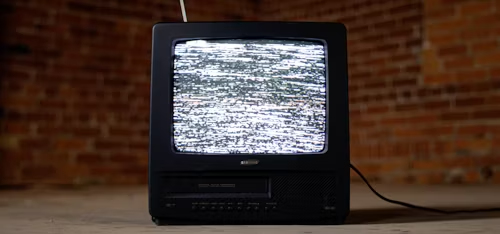
1863 Roller Skates: James Plimpton invents the first practical four-wheeled roller skate, sparking a roller craze.
1864 Oil Pipeline: Samuel van Syckel constructs a pump-operated oil pipeline in Pithole, Pennsylvania, simplifying oil transport.
1865 Web Offset Printing: William Bullock introduces a printing press capable of continuous roll feed and simultaneous double-sided printing.
1867 Barbed Wire: Lucien B. Smith invents barbed wire, revolutionizing cattle ranching.
1870 Pneumatic Subway: Alfred Ely Beach constructs a pneumatic subway under Broadway in New York.
1873 Typewriter: Christopher Latham Sholes invented the typewriter, leading to mass production.
1874 Structural Steel Bridge: Captain James Buchanan Eads completes a steel bridge across the Mississippi in St. Louis.
1875 Electric Dental Drill: George F. Green invents an electric dental drill, replacing manual methods.
1875 Mimeograph: Thomas Alva Edison discovers a method for making duplicate copies of documents.
1876 Telephone: Alexander Graham Bell patents the telephone with assistance from Thomas A. Watson.
1877 Phonograph: Thomas Alva Edison perfects sound recording and transmission at his laboratories.
1879 Incandescent Light Bulb: Thomas Edison perfects the incandescent light bulb, leading to its commercial installation.
1880 Hearing Aid: R.G. Rhodes improved on the ear trumpet with a primitive hearing aid that vibrated the auditory nerve by pressing a thin sheet against teeth.
1882 Electric Fan: Dr. Schuyler Skaats Wheeler introduces a two-bladed desk fan produced by the Crocker and Curtis electric motor company.
1884 Thrill Ride: Luna Park founder L.N. Thompson launches the roller coaster, named Switchback, offering exhilarating rides at Coney Island.
1885 Skyscraper: William Le Baron Jenney completes Chicago’s 10-story Home Insurance Company Building, the first skyscraper with steel-girder construction, heralding a new architectural era.
1887 “Platter” Record: Emile Berliner invents the horizontal disc recording process and introduces the “platter” record as an improvement over Edison’s tube recording system.
1888 Kodak Camera: George Eastman introduces a portable hand-held box camera pre-loaded with 100-exposure film, revolutionizing amateur photography.
1889 Dishwasher: Mrs. WA Cockran of Shelbyville, Indiana, invents a practical dishwashing machine, easing kitchen labor after years of work and prototypes.
1891 Peep Show: Thomas A. Edison and William Dickson perfect the kinetoscope, allowing viewers to watch moving images through a tiny peephole at 46 frames per second.
1891 Escalator: Jesse W. Reno introduced a novelty ride at Coney Island: a moving stairway elevating passengers on a conveyor belt at a 25-degree angle. The ride was later showcased at the 1900 Paris Exposition.
1892 Gasoline-powered Car: Brothers Frank and Charles Duryea fabricated the first gasoline-powered automobile in the United States in a loft in Springfield, Massachusetts, and successfully ran it on the streets of Springfield in September 1893.
1893 Zipper: Whitcomb L. Judson introduces his clasp locker at the World’s Columbian Exposition in Chicago, evolving into the modern zipper with the name coined by workers at B.F. Goodrich in 1923.
1896 Automatic Hat: James Boyle of Washington, DC, invents a hat that tips automatically, enhancing public courtesy for the modern gentleman.
1897 Player Piano: Edwin S. Votey patents the self-playing piano, the pianola, which uses perforated paper to drive artificial wooden fingers above a piano keyboard.
1898 Submarine: The J.P. Holland torpedo boat company launches the first practical submarine commissioned by the U.S. Navy, successfully passing tests and receiving orders for six more.
1901 Shaving: King Camp Gillette introduces the double-edged safety razor, transforming shaving and selling millions of razors and blades by 1904.
1902 Air Conditioning: Willis H. Carrier pioneers the first system to control temperature and humidity, founding Carrier Corporation to produce air-conditioning equipment.
1903 Airplane: Orville and Wilbur Wright achieved the first powered, sustained, and controlled airplane flight at Kitty Hawk, lasting 12 seconds for Wilbur and 59 seconds for Orville later that day.
1908 Model T: Henry Ford introduces the Model T automobile, selling 15.5 million units by 1927 with improved assembly line processes.
1911 Self Starter: Charles F. Kettering’s electric automobile starters, adopted by Cadillac, increased the popularity of gasoline-powered cars by eliminating hand cranks.
1914 Panama Canal: Completing the Panama Canal after 36 years reduces sailing distances between the East and West Coasts by over 8,000 miles.
1917 War: U.S. troops enter World War I, encountering new technologies such as armored tanks, machine guns, poisonous gas, submarines, and airplanes.
1919 Hydrofoil: Alexander Graham Bell’s “Hydrodome IV” sets a world record of 70 mph for water travel using underwater fins to reduce hull drag.
1920 KDKA: Commercial radio broadcasting begins with AM station KDKA of Pittsburgh, delivering election results and leading to rapid industry growth.

1921 Wirephoto: Western Union sends the first electronically transmitted photograph based on Alexander Bain’s 1843 concept for facsimile transmission.
1924 Execution: Nevada introduces death by gas chamber for humane capital punishment, with Gee John taking six minutes to die.
1926 Rocket: Robert H. Goddard launches the first successful liquid-fueled rocket, reaching 41 ft. altitude at his aunt Effie’s farm in Auburn, Massachusetts.
1927 Television: Philo Farnsworth demonstrates the first television, broadcasting an image of a dollar sign, sparking industry success and patent disputes.
1929 Frozen Food: Clarence Birdseye introduces quick-frozen foods inspired by Labrador natives’ preservation methods during fur-trapping expeditions.
1931 Radio Astronomy: Karl Guthe Jansky discovers radio waves from stars while investigating electrical interference on telephone transmissions at Bell Telephone Laboratories.
1932 Defibrillator: Dr. William Bennett Kouwenhoven develops a heart jump-starting device at Johns Hopkins University, advancing medical treatment for heart conditions.
1937 Chair Lift: Engineers from the Union Pacific Railroad built the first chair lift at Dollar Mountain Resort in Sun Valley, Idaho, revolutionizing skiing by eliminating uphill climbs.
1938 Nylon: A team at E.I. du Pont de Nemours & Company invents Nylon, a robust and silk-like fabric finding applications in hosiery and cordage.
1939 Digital Computer: John Atanasoff and Clifford Berry completed the prototype of the first digital computer, which utilized binary code for data storage and calculations.
1940 Jeep: Karl K. Pabst created the Jeep, a versatile four-wheel-drive vehicle widely used in World War II and later embraced for domestic purposes.
1942 Atomic Reaction: Enrico Fermi’s team achieves the first controlled nuclear chain reaction at the University of Chicago, laying the groundwork for bomb development.
1945 Atomic Bomb: J.R. Oppenheimer’s team detonates the first atomic bomb at Los Alamos Lab, leading to the devastating bombings of Hiroshima and Nagasaki, Japan.
1947 Polaroid Camera: Dr. Edwin H. Land introduced the Polaroid camera, which offered instant photographic development and later expanded into color models with multiple patents.
1948 Electric Guitar: Leo Fender launches the Telecaster, a solid-bodied electric guitar that has become iconic in rock and roll music.
1951 UNIVAC 1: The Eckert and Mauchly Computer Co. sells UNIVAC 1, the first commercial computer, to the U.S. Census Bureau. It uses mercury tubes for data storage.
1953 Heart-Lung Machine: Dr. John H. Gibbon performs the first successful open heart surgery using a heart-lung machine, broadening surgical options for heart conditions.
1955 Nuclear Submarine: The Nautilus, the first nuclear submarine, enables long-range underwater travel with a single fuel charge, revolutionizing naval warfare.
1957 Polio Vaccine: Dr. Albert Sabin develops a polio vaccine, ending polio epidemics and preventing widespread childhood paralysis.
1958 Explorer I: The U.S. launched the Explorer I satellite in response to the Soviet Union’s Sputnik discovering the Van Allen radiation belts.
1960 Laser: Theodore H. Maiman invents the first laser using artificial ruby, opening new avenues in science and technology.
1964 Operating System: IBM releases O.S./360, the first widely used computer operating system, ensuring compatibility across IBM 360 computers.
1965 Minicomputer: Digital Equipment launched the PDP-8, the first minicomputer using integrated circuits. It became popular due to its compact size and affordability.
1969 Moon Landing: NASA’s Apollo 11 mission successfully landed on the moon, fulfilling President Kennedy’s goal, although he did not live to see it.
1970 Optical Fiber: Corning Glass developed transparent glass fibers for light pulse transmission, which led to experiments by GTE and AT&T and revolutionized communications.
1972 Video Game: Noland Bushnell created Pong, a seminal video game that led to the founding of Atari and the growth of the video game industry.
1974 Barcode: Barcoded products debut in American stores, replacing manual cash registers with laser scanners at checkout, marking the rise of barcode technology.
1975 Microsoft: Bill Gates and Paul Allen established Microsoft, selling their first software to MIT, marking the start of Microsoft’s dominance in computer software.
1976 Super Computer: Cray Research introduces the Cray-1 supercomputer, capable of 240 million calculations per second, beginning Seymour Cray’s legacy in supercomputing.
1979 Human-Powered Flight: Cyclist Byron Allen crosses the English Channel in the Gossamer Albatross, showcasing advancements in lightweight materials and human-powered flight.
1981 Space Shuttle: NASA launched a reusable space shuttle for satellite operations and space research, yet faced challenges like the 1986 Challenger disaster.
1982 Artificial Heart: Dr. Robert Jarvik implants Jarvik 7 artificial heart into Dr. Barney Clark, showcasing medical advancements.
1983 P.C.: Personal computers revolutionized communication, dominated by IBM and clones, leading to widespread use and tech progress.
1985 Genetic Engineering: USDA approves the sale of the first genetically altered organism, sparking biotech advancements and modified crops.
1988 Graphic User Interface: Apple accused Microsoft of copying its interface, leading to legal battles. Apple struggled financially in the mid-90s.
1990 Hubble Telescope: Deployed by the Discovery shuttle, Hubble contributes to space exploration despite initial flaws, yielding numerous discoveries.
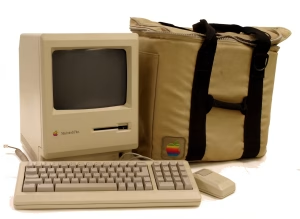
Conclusion:
This journey showcases humanity’s relentless pursuit of innovation and its profound impact on shaping the modern world.


